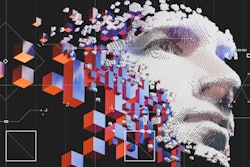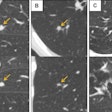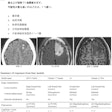
Misleading commentary and incorrect information on social media regarding the impact of artificial intelligence (AI) on radiology can significantly impact how the specialty is perceived, and it's time for radiologists to reshape the conversation, according to an article published online June 15 in Clinical Imaging.
"Radiologists must rise to the challenge and embrace social media as an opportunity to counter the false narrative of the insignificance of radiologists in patient care and the idea that AI will replace radiologists," wrote Dr. Sonia Gupta of Beth Israel Deaconess Medical Center in Boston, Dr. Taj Kattapuram of Radiology Imaging Associates in Englewood, CO, and Dr. Tirath Patel of Houston Radiological Associates in Houston.
And it's not just the public that can be influenced by prognostications into thinking that radiologists may soon be made obsolete by AI.
"Negativity toward the field of radiology because of concerns about AI has filtered down to medical students," the authors wrote. "A recent survey of Canadian medical students found that medical students are anxious and less likely to choose radiology as their specialty due to concerns that AI will reduce the demand for radiology. A similar finding was seen among a small sample of medical students in Switzerland."
The authors offered five suggestions for how radiologists can utilize social media to change the narrative to more accurately reflect their skills and passion for patient care:
- Have an active presence online and use their online presence to engage with nonradiologists, including nonradiology physicians, patients, advocacy organizations, and healthcare entities. Radiologists should embrace the opportunity to engage with the lay public and demonstrate their knowledge expertise, such as holding Q&As on Twitter with patients. Radiologists also have the responsibility to remind their colleagues and patients that they remain advocates for best practices in multiple settings, according to the authors.
- Engage with media -- particularly those that reach a wider audience other than radiologists. Use that opportunity to discuss the future of radiology in a positive light, the authors said.
- Directly educate patients about their imaging exams and discuss the potential of AI. If AI was used, explain the role it played in the diagnosis. In order to ease patient concern that AI worked independently, emphasize the role the physician plays and that AI does not function alone, suggested the authors.
- Engage and work with technology companies in product development and work as partners, not competitors, the researchers recommended.
- Emphasize the role radiologists play in AI development. The authors noted that radiologists have taken on the responsibility of ensuring that AI is used ethically and safely in medical imaging.
By engaging in discussions with other specialists, patients, and media, radiologists can open up a new world of possibilities to evolve in their daily practice and hopefully contribute to lasting solutions, according to Gupta, et al.
"In short, radiologists must be proactive to take the reins and regain the public's perception of the specialty and its future," the authors wrote. "The hope is that these new discussions take place on social media to demonstrate the vital importance of radiologists in AI usage, development, and ethics."




















